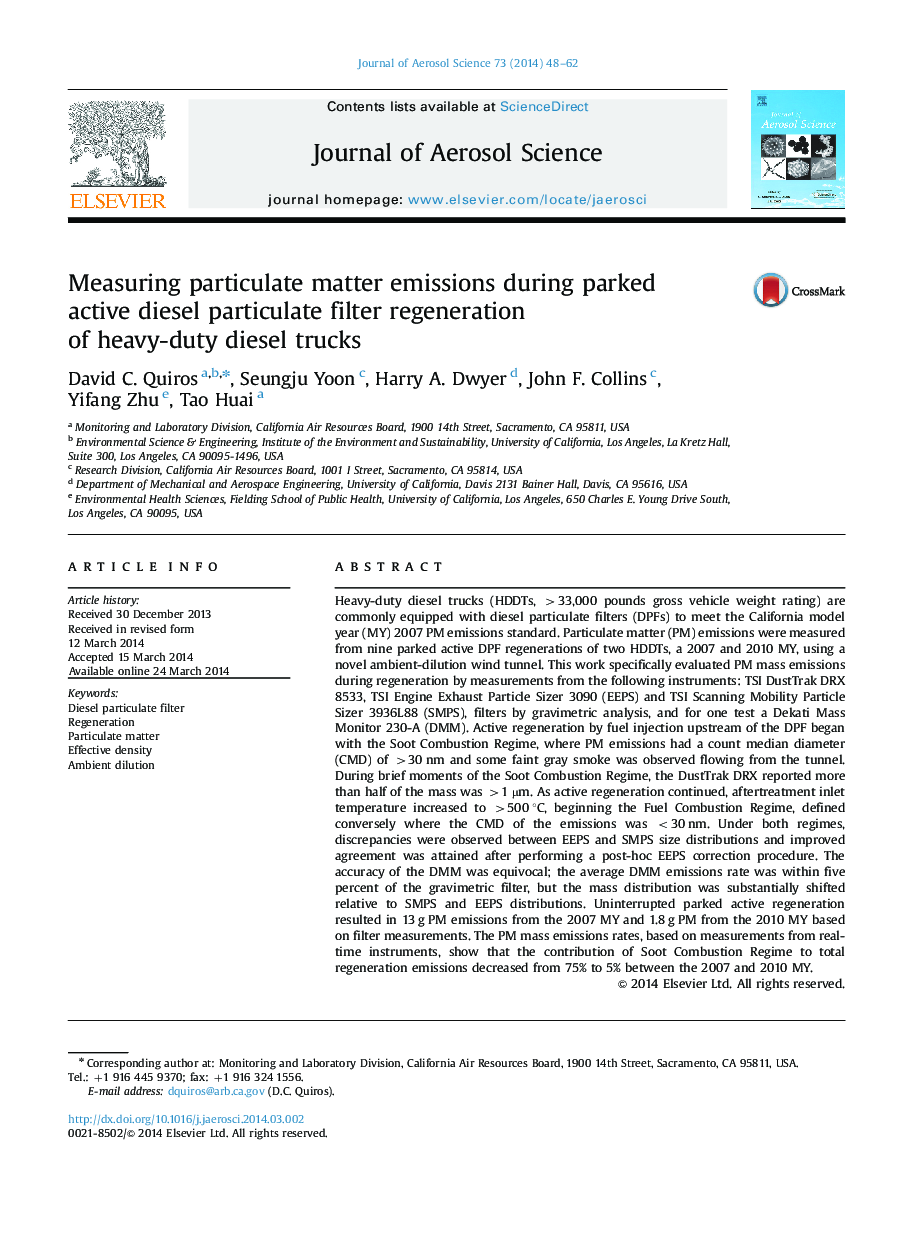| کد مقاله | کد نشریه | سال انتشار | مقاله انگلیسی | نسخه تمام متن |
|---|---|---|---|---|
| 4452395 | 1620750 | 2014 | 15 صفحه PDF | دانلود رایگان |
• We measured DPF regeneration emissions from two parked heavy duty trucks.
• Particulate matter emissions were classified into Soot and Fuel Combustion regimes.
• Four real-time measures of PM mass were evaluated relative to filter measurements.
• Up to 13 and 1.8 g PM were emitted respectively from the 2007 and 2010 MY trucks.
• Particle numbers after ~33 times dilution exceeded 107 #/cm3 for both trucks.
Heavy-duty diesel trucks (HDDTs, >33,000 pounds gross vehicle weight rating) are commonly equipped with diesel particulate filters (DPFs) to meet the California model year (MY) 2007 PM emissions standard. Particulate matter (PM) emissions were measured from nine parked active DPF regenerations of two HDDTs, a 2007 and 2010 MY, using a novel ambient-dilution wind tunnel. This work specifically evaluated PM mass emissions during regeneration by measurements from the following instruments: TSI DustTrak DRX 8533, TSI Engine Exhaust Particle Sizer 3090 (EEPS) and TSI Scanning Mobility Particle Sizer 3936L88 (SMPS), filters by gravimetric analysis, and for one test a Dekati Mass Monitor 230-A (DMM). Active regeneration by fuel injection upstream of the DPF began with the Soot Combustion Regime, where PM emissions had a count median diameter (CMD) of >30 nm and some faint gray smoke was observed flowing from the tunnel. During brief moments of the Soot Combustion Regime, the DustTrak DRX reported more than half of the mass was >1 µm. As active regeneration continued, aftertreatment inlet temperature increased to >500 °C, beginning the Fuel Combustion Regime, defined conversely where the CMD of the emissions was <30 nm. Under both regimes, discrepancies were observed between EEPS and SMPS size distributions and improved agreement was attained after performing a post-hoc EEPS correction procedure. The accuracy of the DMM was equivocal; the average DMM emissions rate was within five percent of the gravimetric filter, but the mass distribution was substantially shifted relative to SMPS and EEPS distributions. Uninterrupted parked active regeneration resulted in 13 g PM emissions from the 2007 MY and 1.8 g PM from the 2010 MY based on filter measurements. The PM mass emissions rates, based on measurements from real-time instruments, show that the contribution of Soot Combustion Regime to total regeneration emissions decreased from 75% to 5% between the 2007 and 2010 MY.
Journal: Journal of Aerosol Science - Volume 73, July 2014, Pages 48–62
